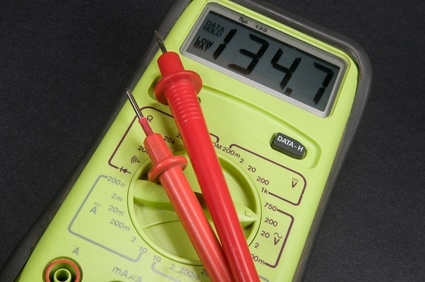
If you're like most people, you've experienced a dead car battery at some point in your life. Often, a drained battery strikes at the most inopportune time; usually when you're already late for work or in a rush to get home after a long day. You can prevent this frustrating event from happening by properly discerning whether your car battery has a full charge. Equipped with this knowledge, you can recharge the battery, replace it or take your vehicle to a mechanic for further diagnosis.
Open your vehicle's hood and check to make sure that all switches are turned off. Your lights or radio should not be on, nor should you have any accessories, such as a cell phone or GPS, plugged into the vehicle's outlet.
Remove any plastic shields that may be covering your battery. You will need to have free access to the battery's positive and negative terminals in order to ascertain whether it is fully charged.
Connect the positive probe of your voltmeter to the positive terminal on your battery. The positive probe will, in most instances, be red or yellow. On your battery, the positive terminal is frequently identified with a plus sign. Some voltmeters have multiple settings. Check to make sure your voltmeter is set to 12 volts.
Connect your voltmeter's negative probe to the negative terminal on the battery. Your negative probe will be black in color. The negative terminal on the battery is identified with a minus sign.
Look at the display on your voltmeter. You should see a number in the 12.5 to 12.8 range. This indicates a battery that is fully charged. If you see a number less than 12.5, your battery is not sufficiently charged. A reading of 12.45 indicates a 75 percent charge. A readout of 12.24 equals 50 percent, while a reading of 11.89 translates to a fully depleted battery.